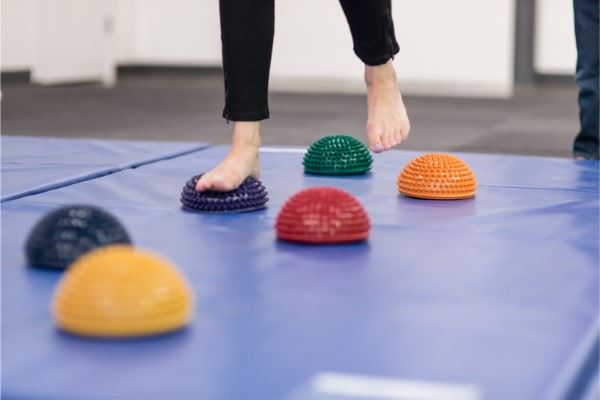-
Home
-
The Benefits of Therapeutic Exercise
The Benefits of Therapeutic Exercise
March 30, 2023

Therapeutic exercise is highly effective for promoting long-term health and aiding in physical recovery by helping to improve strength, stability, balance, flexibility, or endurance. Depending on the patient’s individual needs and abilities, a therapeutic exercise plan can include independent activities, active assisted exercises done with the help of a healthcare professional or caregiver, or some combination of both.
What Is Therapeutic Exercise?
Therapeutic exercise is a broad term that encompasses many different types of physical activities including strength training, flexibility exercises, endurance training, progressive resistive exercise, and more. These exercises are often prescribed by healthcare professionals such as physical therapists or occupational therapists as part of a physical therapy treatment plan.
Examples Of Therapeutic Exercise
There are many different types of exercises and therapeutic activities that can be performed with or without assistance as part of an individual’s treatment program.
Some therapeutic exercises include:
- Stretching and flexibility exercises
- Manual therapy techniques such as massage or joint mobilization
- Large muscle group endurance exercises such as walking or running
- Balance activities such as standing on one foot or walking heel-to-toe in a straight line
- Resistance training with bands or weights to increase muscle strength
- Core stability exercises to improve posture and balance
- Functional activities such as climbing stairs or carrying groceries
Benefits Of Therapeutic Exercise
The goal of therapeutic exercise is to improve muscle and joint function in order to reduce pain and improve quality of life. Therapeutic exercise has been shown to provide numerous benefits for patients with chronic conditions, injuries, neurological disorders, and more.
Benefits include:
- Improved strength and endurance
- Improved range of motion (ROM)
- Decreased pain
- Improved functional abilities
- Improved quality of life overall
Additionally, therapeutic exercise programs can help reduce the risk of future injuries by strengthening the muscles around the joints in order to support them better during daily activities.
Tools for Therapeutic Exercise
Whether you're looking to improve mobility, posture, balance, or strength, there are a variety of products specifically designed to help you reach your therapeutic exercise goals.
Hand and Finger Exercisers, such as putty and grips, focus on strengthening the muscles and promoting joint mobilization in the hand, wrist, and fingers.
Shoulder Rehabilitation Tools, such as pulleys, are used to increase or maintain ROM and strengthen muscles in the shoulder.
Exercise Equipment, including treadmills, bikes, and exercise mats, help improve circulation, strength, endurance, and ROM for both the upper and lower body.
Balance and Stability Tools, such as exercise balls and balance beams, help improve overall strength, endurance, ROM, balance, and coordination.
Weights can be used in various rehabilitation and exercise applications to increase strength, range of motion, and endurance.
Resistance Bands and Tubing help stretch and strengthen targeted muscle groups, with varying levels of resistance to meet the needs of any patient’s individual treatment plan.
Foam Rollers can help relieve muscle tightness and can be used in rehabilitation, stability, or strengthening routines.
Whether you’re dealing with an acute injury or managing chronic pain due to an underlying medical condition, adding therapeutic exercise to your treatment plan can greatly benefit your health. Consult with your healthcare provider about creating an individualized exercise program tailored specifically to your needs.